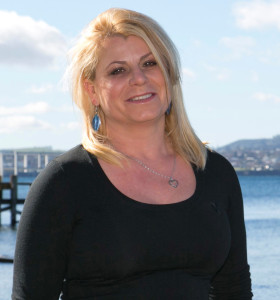
by Editor | Jan 4, 2023 | Accomodations, Attractions, Ecotourism, Food and Wine, Luxury Travel, Restaurants

*Wayne’s Waiatoto River Safari, a private river outing
Under normal circumstances our articles are based exclusively on the experiences and photography of our contributors at a destination and voyage. Due to the Covid-19 pandemic we have halted travel. For those ready to travel now we are offering limited updates about destinations, properties and tours we featured in the past and whose representatives have responded to our questions and requests for updates. This series of updates began in 2021.
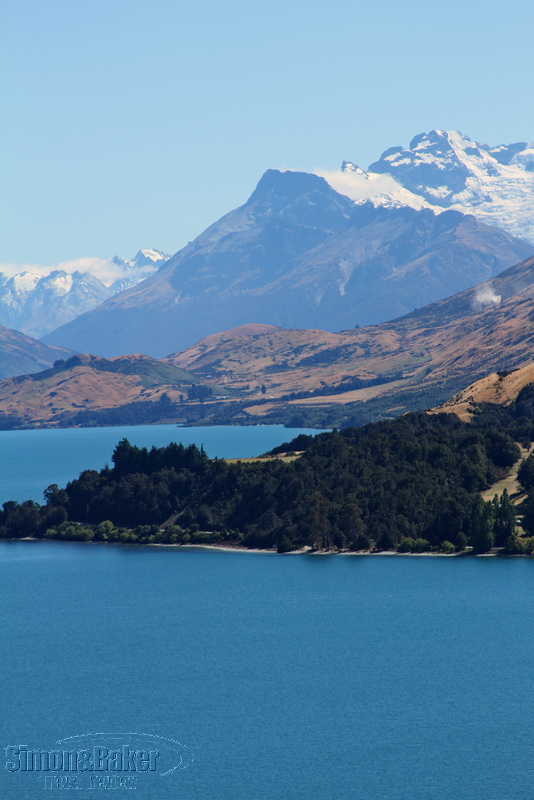
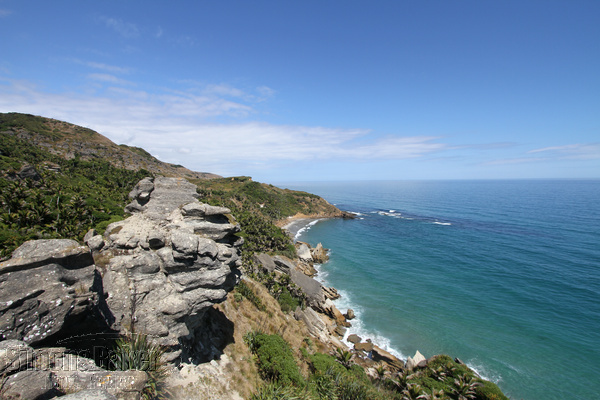
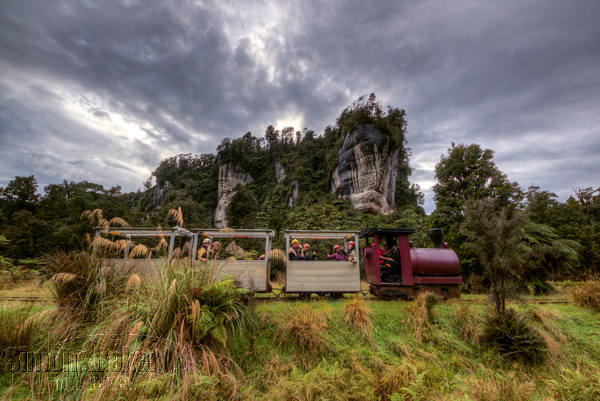
In 2019, following a trip to New Zealand and private tour, we profiled Aroha New Zealand Tours Intrepid, South Island. Three of the properties in that itinerary have failed to reply to our emails, two others have closed and one of the attractions is no longer in business. Lakestone Lodge and Cabot Lodge shared updates and responded to questions, see Update: NZ lodge near Fiordland National Park and Update: NZ lodge welcoming international guests.
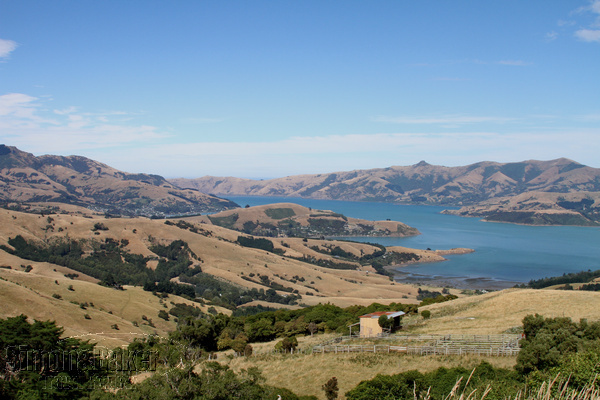

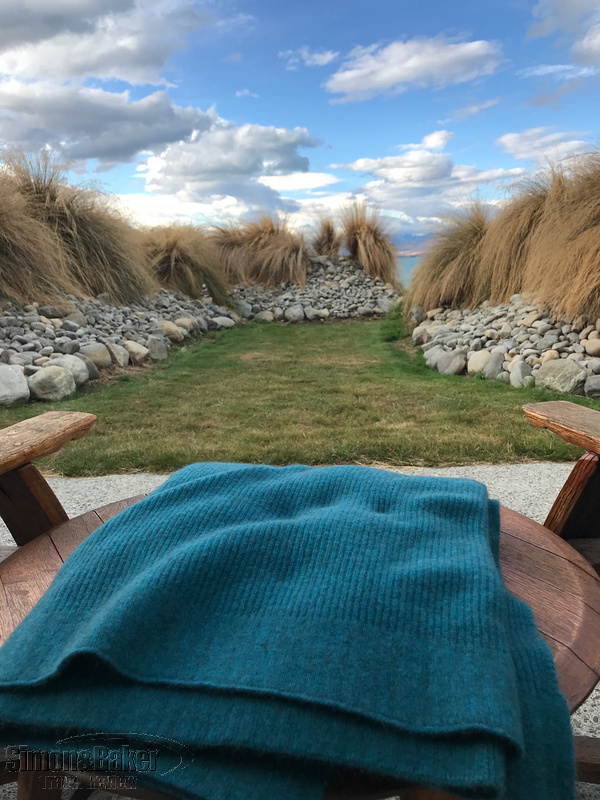
We recently contacted Veronika Vermeulen, director, Aroha New Zealand Tours Ltd. to ask about the bespoke luxury tour company and current travel conditions in New Zealand. Below are our questions and her answers.

Veronika Vermeulen, director, Aroha New Zealand Tours Ltd.
LTR: Are you welcoming international travelers?
VV: Yes we are open to all travellers. Tours started back with neighbouring countries in July, and September in general.
LTR: A number of travel business across the globe have shut down post pandemic. Some travelers have been stranded as a result. What is the situation in this regard in New Zealand and with your company?
VV: Everybody was able to leave New Zealand with the help of our company and our government in the following month after the borders were closed. However, some people decided to stay for a month (some have yet to leave) to sit out the world crisis in New Zealand.
LTR: What, if any, policies and safeguards do you have in response to Covid-19?
VV: We have applied government Covid regulation and still provide today a Covid-19 Safety Plan. We are committed to keeping you safe.
On the other hand we are not taking long pre pays and only request a small down payment, to cover our original service cost. Main payment is only required 40 days before arrival (conditions apply with some premium luxury stays).
LTR: Is there flooding, a water shortage/drought or other condition(s) affecting facilities, guests amenities, safe and comfortable travel in New Zealand?
VV: No, none of this is affecting New Zealand for now.
LTR: Are there any updates to your services and tours you care to share. Do you offer private accommodations like rental homes or small lodges for extended stays (a week or longer) and for guest that want a private or isolated stay?
VV: We decided to stay even more unique and boutique with a concentration on customer services rather than the high turnover. We can offer private stays (boutique properties) for privacy and extended stays. However, we still concentrate on private guided tours as our primary sector.
LTR: Would you share details of any extended stay packages such as weekly or monthly rates.
VV: We 100 percent customised and have no standard rates!
See example pricing attached for 2 people.
LTR: New Zealand news of youth gangs, future earthquake risks and other severe weather events have been in the news this year. Would you comment on the likelihood that a visitor might be affected by one or more of those issues?
VV: No gangs are effecting any traveller!
Earthquakes are likely but no danger. Common we are called the shaky ales!
Floods like most other countries around the world.
LTR: Are Amisfield Bistro & Cellar Door, Wayne’s Waiatoto River Safari, Tasman Helicopter, Underworld Rafting all operating normally?
VV: Yes all these are running normal again
*Photos were taken during a pre-pandemic trip, except for the photo of Veronika Vermeulen provided by Aroha New Zealand Tours Ltd.
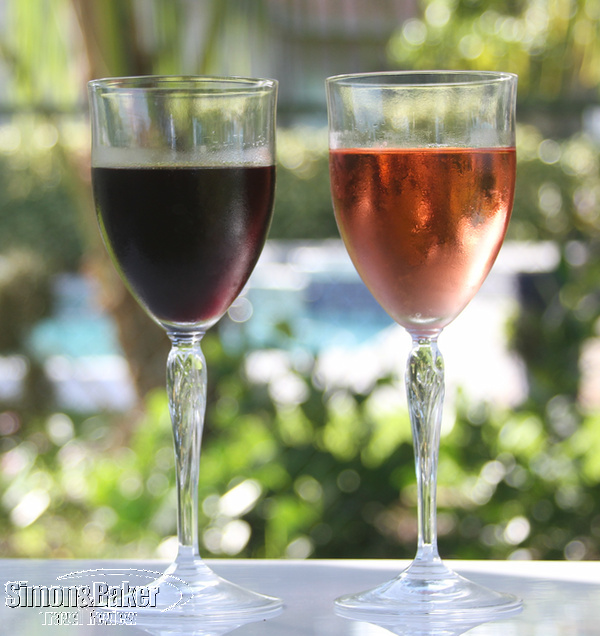
by Editor | Dec 21, 2020 | Food and Wine, Luxury Travel
By Elena del Valle
Photos by Gary Cox

The non vintage Silverhead Brut our favorite
In celebration of health, life, peace and hope we made time to taste three Spanish wine samples we received from Vara Winery & Distillery in New Mexico (315 Alameda Boulevard NE Albuquerque, New Mexico 87113, +1-805-815-7693, https://varawines.com/). Vara sells 12 types of Spanish and American wines bottled in Albuquerque.
We tasted the Garnacha Rosado 2018, Tempranillo 2018, and non vintage Silverhead Brut on separate occasions. While we liked all three the cava was our favorite.

The Tempranillo consisted of 82 percent tempranillo and 18 percent garnacha grapes.
The Silverhead Brut, made with the Cava Método Tradicional, was refreshing, lightly fruity, well balanced, easy to drink. It had a pleasing pale yellow color and stood on its own with a clean finish. It paired well with fresh Florida stone crabs, fish dip and a green salad. We liked it best chilled although it held up well after a few minutes.
The lightly chilled Garnacha was a success with poultry and vegetable soup, even foie gras mousse. Its medium to light intensity held up to the flavors of the dishes without overpowering them. It had a mild finish. It was made with 100 percent garnacha grapes harvested from Viñedos de Santo Cristo and Campo de Borja in Spain.
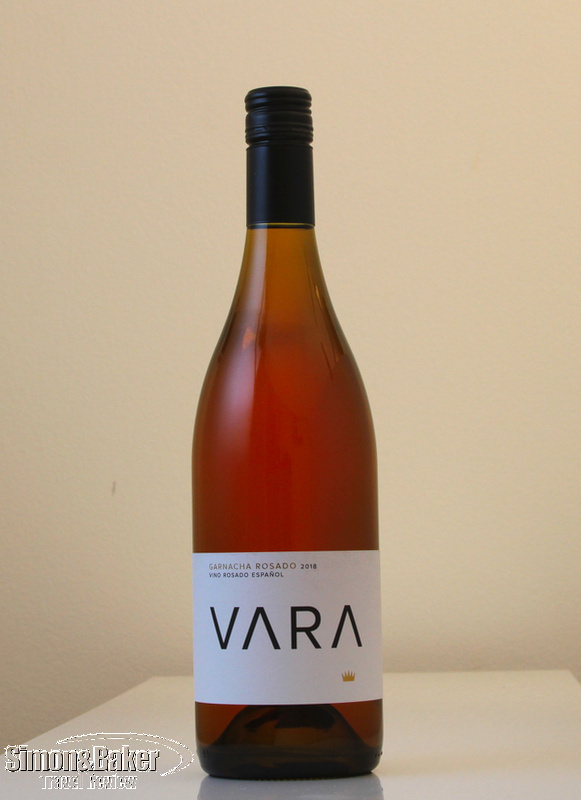
We first tasted the Garnacha Rosado 2018.
The Tempranillo, a red wine made from the same vineyards as the Garnacha, consisted of 82 percent tempranillo and 18 percent garnacha grapes. Its deep red with a hint of purple promised a full bodied wine. On its own it was good with a gentle finish. It paired well with grilled German bratwurst and homemade fries. It was stout enough to match with sauerkraut.
“Vara means cane in Spanish, King Philip of Spain gave the Vara, Cane of Sovereignty, to the 19 northern pueblos of New Mexico, a huge honor,” said Doug Diefenthaler, co-founder, Vara Winery & Distillery, by email through his publicist in response to questions about the winery and its products. “Our grapes for our Spanish wines are estate grown, harvested, and made fermentation stable in Campo de Borja, Spain before bringing the wine here to our winery for barreling, blending, finishing, and bottling.”
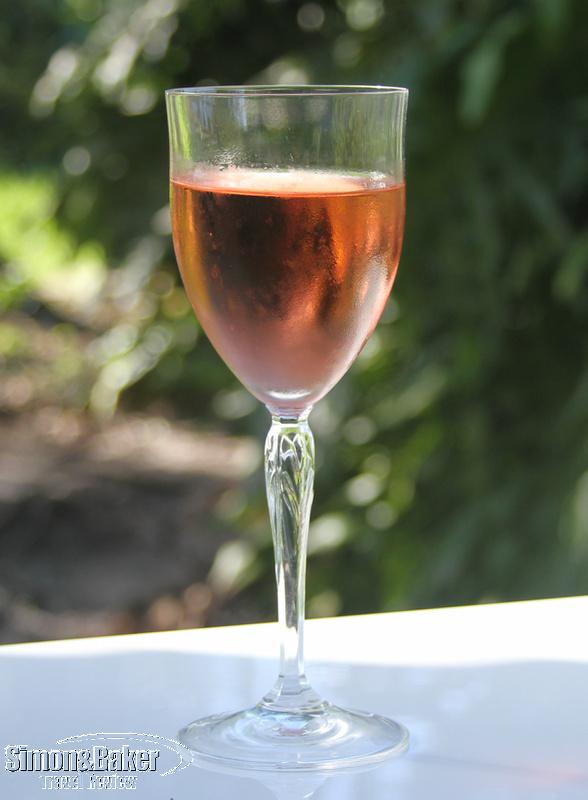
The slightly chilled Garnacha
Diefenthaler, who is executive vice president of the company, co-founded it with Xavier Zamarripa, an artist. Vara has wine making directorial privileges at a facility in Ainzon, Campo de Borja, Spain in order to process and ferment its wines near the vineyard source.
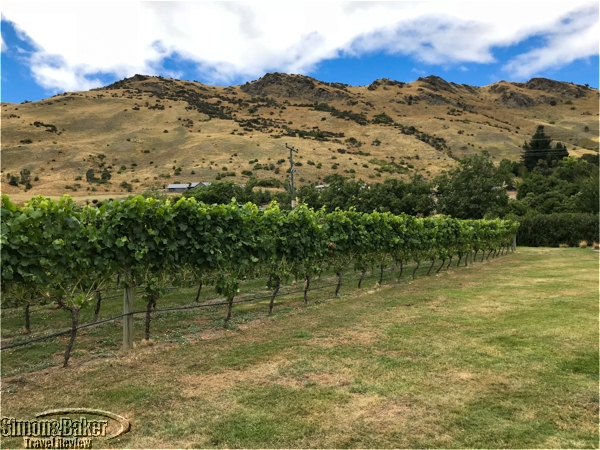
by Editor | Jun 17, 2019 | Food and Wine, Luxury Travel, Restaurants
Article and photos by Elena del Valle

Cardrona Valley lamb neck, garlic yoghurt, pea, umami served with Amisfield Pinot Noir 2016
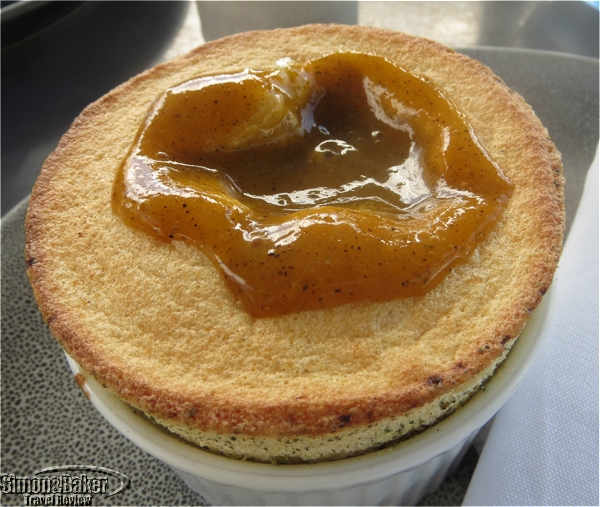
Grilled apricot souffle, lemon verbena
Because I spent most of my trip off the beaten track, on a private Aroha Intrepid tour, my main impression of New Zealand fine dining was derived from lunch at Amisfield Bistro & Cellar Door (10 Lake Hayes Road, RD 1, Queenstown 9371, +64 3 442 0556, amisfield.co.nz, bistro@amisfield.co.nz, cellardoor@amisfield.co.nz), a South Island bistro near Queenstown, where I spent one night. The vineyard side meal was well prepared and well presented, the setting pleasant and pretty. Should I be in the area and in search of a fine dining option I would return, and I would recommend the restaurant to friends and acquaintances traveling to the area.


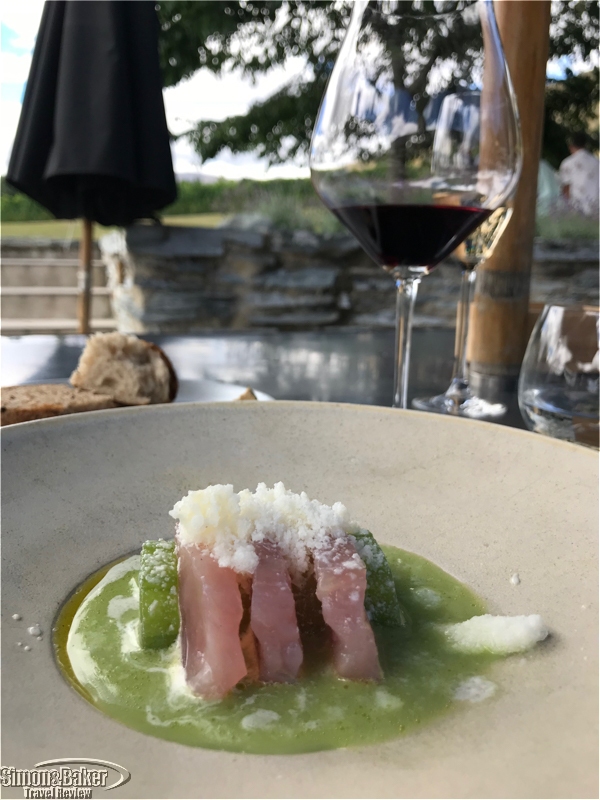
Kingfish, Horseradish, Cucumber
My travel companion and I had lunch there on a breezy and sunny summer day. It was crowded. The restaurant could accommodate up to 100 guests at lunch and 40 at dinner. There were people indoors and outdoors. All the tables I could see from where we sat in the terrace, thankful for the shade of a large umbrella, were occupied. Our table faced a water feature on one side and a green lawn adjacent to the estate vineyards. Despite a mild chill in the air I saw more than one guest take advantage of the respite offered by stacks of sunhats on the edge of the water feature.
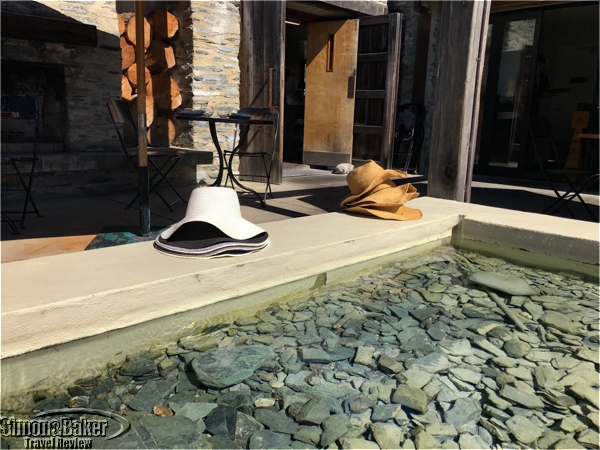
Guests took advantage of the respite offered by sunhats on the edge of the water feature.
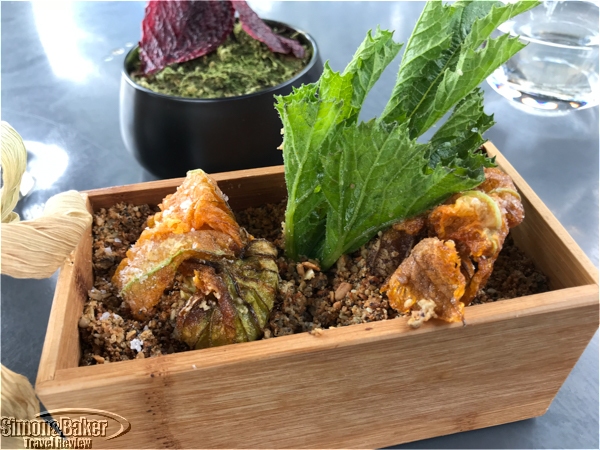
This dish included edible “soil”

A shellfish delicacy
We both had the 5 Course Trust the Chef tasting menu with a partial wine pairing and a couple of extra bites sent from the kitchen: Zucchini flower Toasted corn; Amisfield Brut 2016, Amisfield breads; Tomato sandwich Amisfield Pinot Gris 2018; The paua pie, Amisfield Fume Blanc 2016; Kingfish, Horseradish, Cucumber, Amisfield Chenin Blanc 2018; Cardrona Valley lamb neck, garlic yoghurt, pea, umami, Amisfield Pinot Noir 2015; Grilled apricot souffle, lemon verbena. Several staff rotated at our table. Whenever a server brought a dish he or she listed the ingredients. Some staff were friendly although service was sluggish. Lunch was inventive, aesthetically oriented and satisfying.
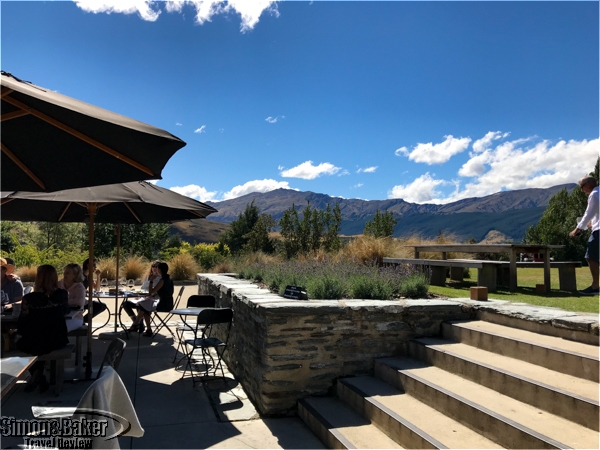
The terrace where we sat for lunch was popular
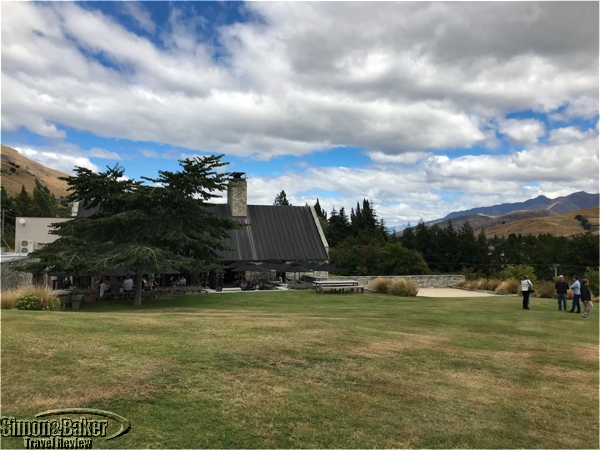
A view of the restaurant built with 1,500 tons of Glenorchy schist and railway sleepers
The two story building was constructed with 1,500 tons of Glenorchy schist and railway sleepers salvaged from a deconstructed bridge in Southland. Headed by Vaughan Mabee, executive chef, the restaurant offered seasonal dishes made from one hundred percent New Zealand ingredients. All meat on offer was grass fed, according to a restaurant spokesperson who responded to questions by email. I liked that the restaurant had an organic produce supplier. The staff only bought sustainable species of fish. Everything was made from fresh, never frozen, ingredients, and the only wines on offer were produced by Amisfield, according to the spokesperson. In 2013, Amisfield began an organic conversion, using as little intervention as possible. The winemaker produced two wines of the natural expression: Amisfield Burn Pinot Gris, an orange wine, and Amisfield Pétillant Naturel.
by Editor | Dec 14, 2015 | Attractions, Food and Wine, Luxury Travel, Restaurants, Wine
Article and photos by Elena del Valle

Blake Gowar at the Eagle’s Nest hilltop
During a recent stay in Constantia, a wine producing suburb of Cape Town, South Africa, I went on a 4.5 hour Private Half Day Wine Tour recommended by the owners of the Glen Avon Lodge where I was staying. At 12 noon sharp, Blake Gowar, owner of The Constantia Wine Tour (11 Midhurst Way, Constantia, Cape Town, 7806, South Africa, +27 021 794 4873, +27 082 377 5233, www.theconstantiawinetour.co.za, Blake@theconstantiawinetour.co.za), picked me up at my hotel in his company branded sports utility vehicle.
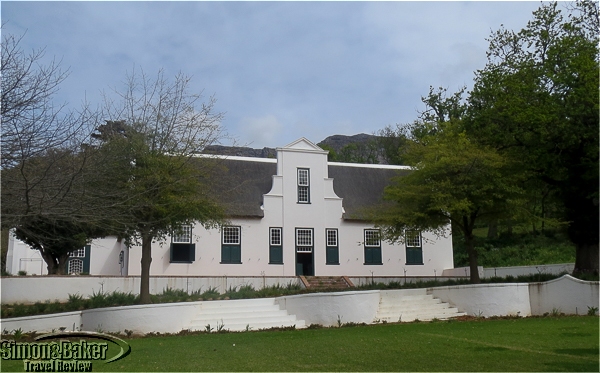
One of the historic buildings of the Klein Constantia Estate
During the short drive to Klein Constantia (Klein Constantia Estate, PO Box 375, Constantia, 7848, South Africa, +27 021 794 5188, kleinconstantia.com, info@kleinconstantia.com), the first of three wineries on the tour, we had a chance to chat as I was the only guest on the tour the chilly winter day. Blake explained his was the first and only company dedicated exclusively to half and full day tours of Constantia wineries.
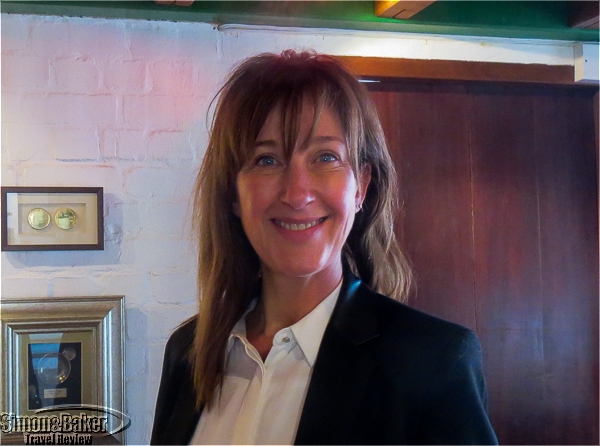
Janine Dodds, our friendly host at Klein Constantia
After passing through the security gate we entered the Klein Constantia Estate. Dating to 1685 the property was built among ancient trees on the upper foothills of the Constantiaberg Mountains. It had a view across the city to False Bay. Although it was in the midst of extensive renovations the tasting room was unaffected. Janine Dodds, a well informed and friendly representative, greeted us and recommended wines for me to taste. We were the only visitors at that moment. Thanks to the quiet off season ambiance I had her undivided attention during the wine tasting. The property was best known for its chardonnay and sauvignon blanc wines. It also had the best stocked gift shop I visited on the tour. There were branded cycling shirts and a variety of foodie and wine items on sale.
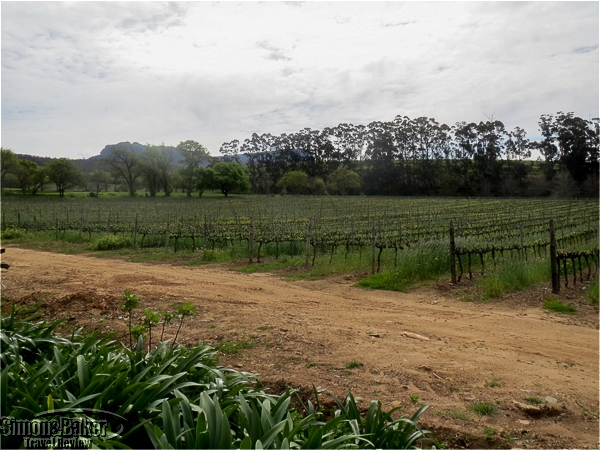
The vineyards at Klein Constantia
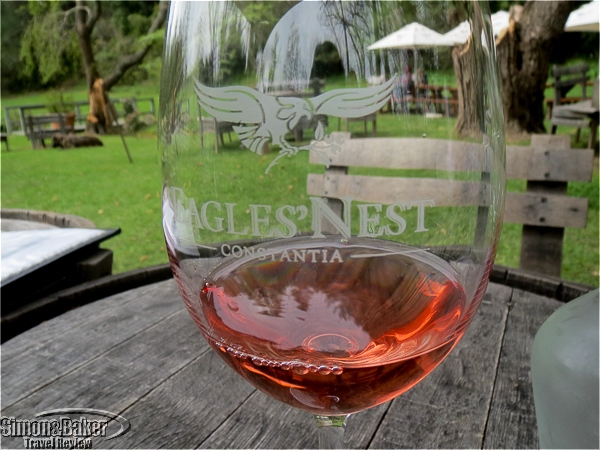
The garden seen through a glass of rose wine at the Eagle’s Nest
A handful of people had arrived before us at the Eagle’s Nest (Old Constantia Main Road, Constantia, 7848, South Africa, +27 21 794 4095, eaglesnestwines.com, info@eaglesnestwines.com, orders@eaglesnestwines.com) where we received a warm welcome from Kaylee Morrick and Kathleen McNulty. There were still left plenty of table choices in the verdant garden. Following the staff’s recommendation I picked a spot where I tasted a rose and couple of the white wines while Blake went to swap his sports utility vehicle for a four wheel drive. Thanks to a family friendship with one of the owners of the Eagle’s Nest Blake had exclusive permission to use the property owner’s Land Rover and drive up the winery’s mountain for tours.
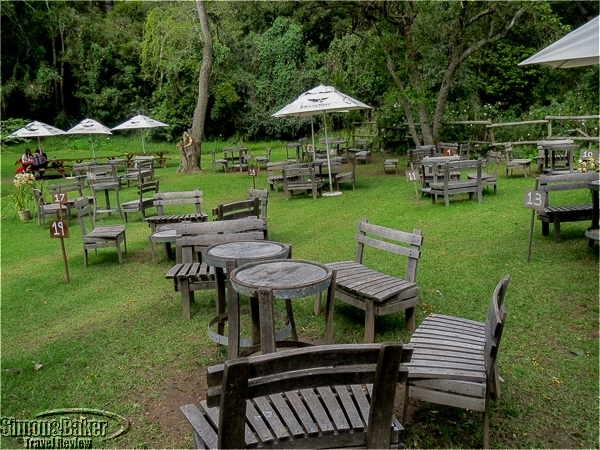
Although it was chilly I was drawn to the lush garden at the Eagle’s Nest
The Eagle’s Nest was in a secluded valley high up on the slopes of the historic Constantia mountain range, part of the Table Mountain area. One of the five small boutique wineries of Constantia it was home to some of the steepest gradient vineyards in the country, Blake explained. The winery was known for its dry rose, viognier and award winning shiraz. The weather worn vehicle climbed the single lane dirt road with the ease of a goat, if slightly less grace. We stopped along the way for some photos and a close up glimpse at flowers.
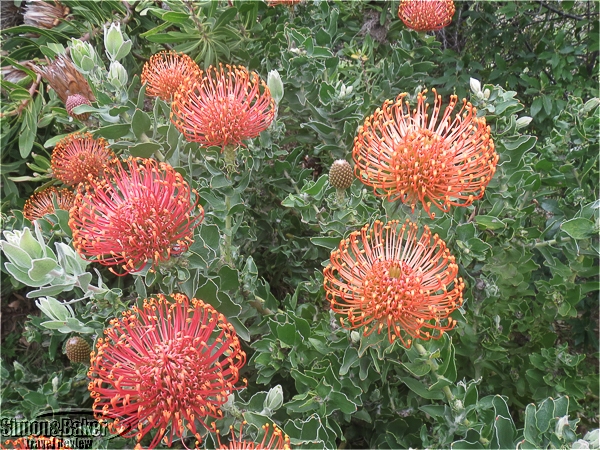
Flowers growing by the side of the road
By the time we reached the high point on the farm the wind had picked up and I was chilled despite my fleece and windbreaker. The panoramic views of the farm, followed by Constantia in the foreground and greater Cape Town beyond reached all the way to the ocean. The breathtaking scenery from the top made the detour worthwhile.

Bird’s eye views of Cape Town from the hilltop at the Eagle’s Nest
On our return to the Eagle’s Nest tasting room, we sat indoors near the crackling flames of the fireplace. The glass walls afforded us a view of the garden during the second half of the wine tasting. I especially enjoyed their three lovely reds.

Our third winery was Silvermist
All that wine tasting had made me hungry. By the time we arrived at Silvermist (Constantia Nek, 7806 Cape Town, South Africa, +27 21 794 7601 silvermistmountainlodge.co.za, silvermistvineyards@gmail.com, silvermisteatery@gmail.com), on the forested slopes of Table Mountain and within the Table Mountain National Park, I was ready for a late lunch and a tasting of the farm produced white. The rustic 120 acre estate that borders the Constantia Wine Route was, I was told, the only organic vineyard in Constantia. It was best known for its sauvignon blanc. Candace Louw, one of the owners, welcomed us warmly when we arrived.
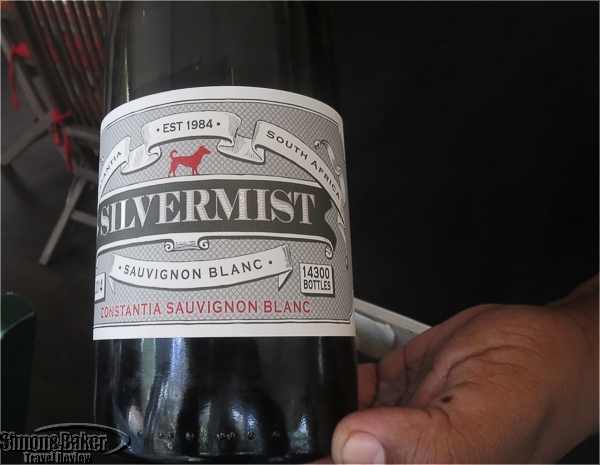
The Silvermist Sauvignon Blanc

The views of Table Mountain National Park at Silvermist
We ate in the Green Vine Eatery, one of two dining venues within Silvermist, where Blake ordered the special of the day, a tasty pizza, and I had a well prepared hamburger with potato wedges. While we waited for lunch we stepped out briefly to enjoy the beautiful views of the environs and Table Mountain. Dessert of chocolate muffins was to go.
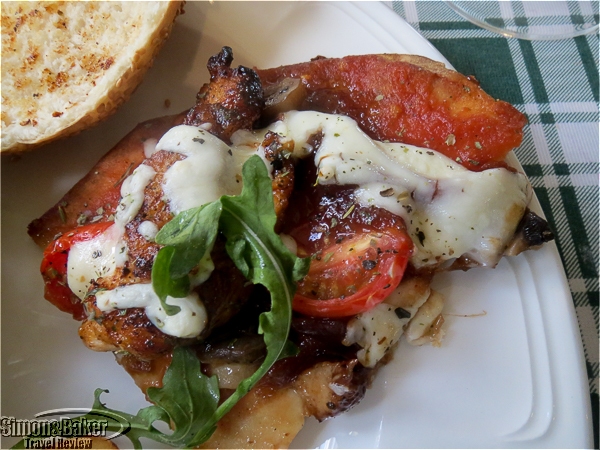
The pizza special for lunch at the Green Vine Eatery
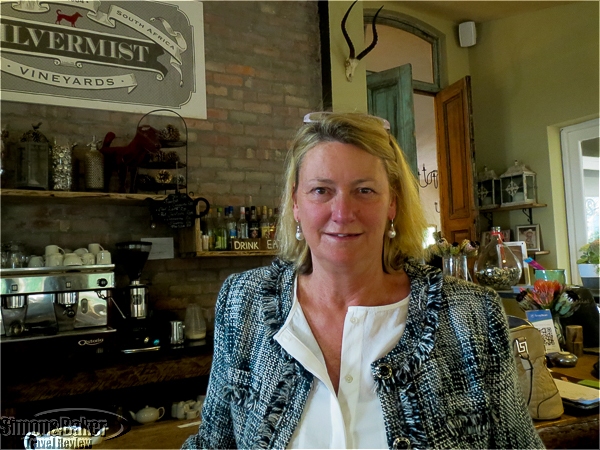
Candace Louw, one of the owners of Silvermist
As my tour guide and I parted company, I realized how much I had enjoyed the pleasant pace of the private half day tour, the wine tastings, lunch, and Blake’s company. Although I had visited Constantia before, I had never been to any of the wineries on our tour that day. I appreciated having someone else drive all afternoon. It meant I could taste as many wines as I wanted without worrying about driving. And, I didn’t have to find the wineries with my rental car’s not always trustworthy GPS directions. Plus, it was fun to discover new estates. Blake’s selection of the wineries was spot on in terms of the setting and the wines themselves. The unique opportunity to climb to the high point of the Eagle’s Nest farm was an unexpected bonus.
by Editor | Nov 30, 2015 | Food and Wine
By Elena del Valle
Photos by Gary Cox
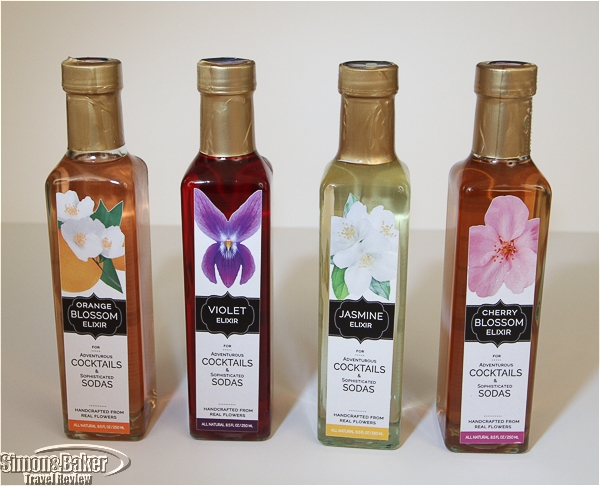
Four of the newest floral drink mixer flavors: Orange Blossom, Violet, Jasmine, and Cherry Blossom
While I find a glass of refreshing spring water to be one of the pleasures of life, over the years I have met many people, including some visitors to my home, who don’t like the taste of water. To address their taste preferences in the past I used to stock up on sodas, juices and other flavored beverages until I discovered floral drink mixers. They offer a way to add natural flavors and a hit of sweetness to water (each serving has 9 grams of sugar), sparkling water, sparkling wine, champagne and any other beverage in need of a pick me up.

A serving of Violet Elixir added a sweet floral flavor to spring water
The Floral Elixir Company (2100 W 7th Street, Cleveland, Ohio, 44113, +1216-385-0292, www.floralelixir.com, nora@floralelixir.com) offers 13 all natural floral drink mixers: Rose, Lavender, Tropical Orchid, Hibiscus, Elderflower, Cherry Blossom, Orange Blossom, Rose Hip, Juniper Berry, Jasmine, Violet, Prickly Pear, and Lemon Verbena. We liked all the ones we sampled.
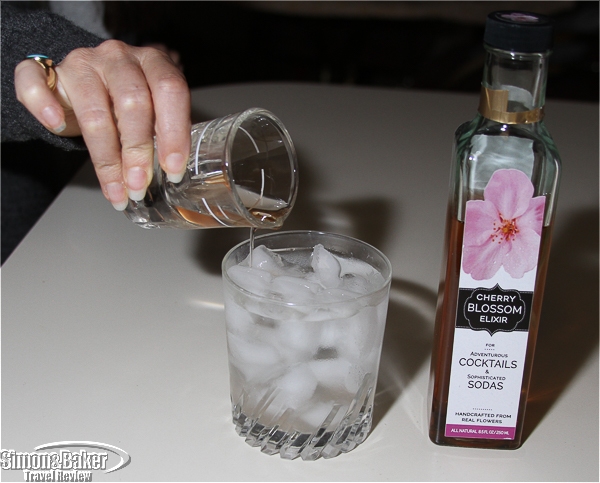
Cherry Blossom Elixir with water on the rocks
I love the Tropical Orchid with brut sparkling wine (see Flower and fruit liquid infusions add flavor, sparkle to special occasions). From the eight new flavors, I sampled Cherry Blossom, Orange Blossom, Jasmine, and Violet. Jasmine was my favorite with brut sparkling wine. I liked them all with water. Next, I plan to try them with iced tea.
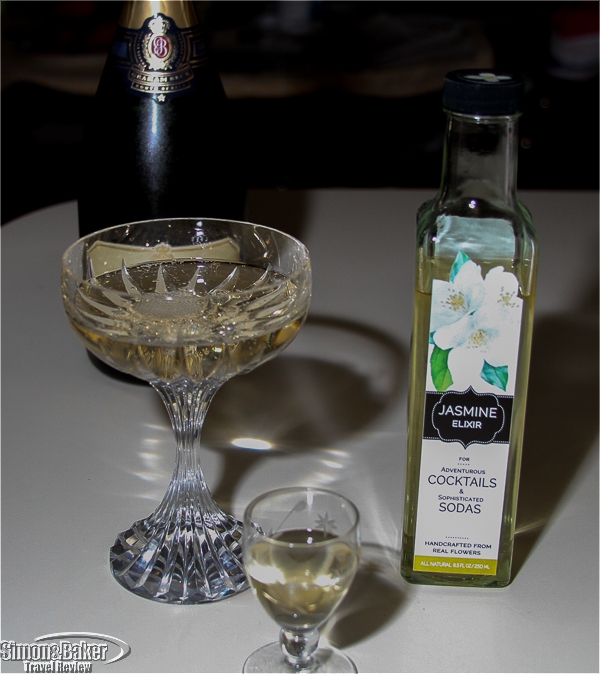
I especially liked the Jasmine with brut sparkling wine or brut champagne
“I handcraft a line of floral drink mixers – all natural – they’re made from real flowers blended with a touch of cane sugar that are ideal to create adventurous cocktails and sodas,” said Nora Egger, owner, Floral Elixir Company, by email from Goa, India, where she was traveling in search of new flowers for her company. “I choose my Flavors based first on other countries around the world that have historically made beverages and dishes using certain flowers and the spend some time refining the recipes so that they are enjoyable in beverages.”
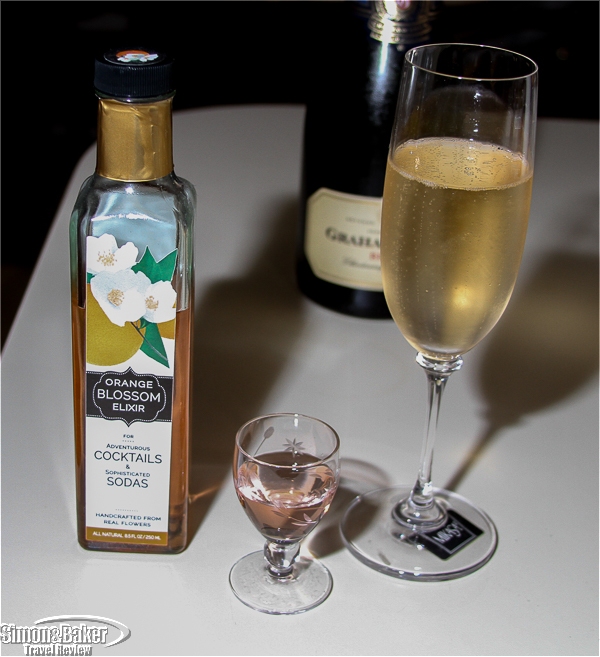
We also tasted Orange Blossom Elixir with brut sparkling wine
The ingredient list for the mixers was short, including pure cane sugar, real flowers and floral extracts, (nothing synthetically produced). They may also include natural plant based dyes, such as red beet for Rose, black carrot for Lavender and spiraling for Lemon Verbena, Egger explained. Most ingredients come from the United States where the mixers are made. Some of the essences, such as the one from Damask Rose from Bulgaria, come from Europe where they are harvested.
Deciding which ones to sample first was challenging. The best selling flavor? Nora says Lavender is quite popular for all beverages, followed by Tropical Orchid and Rose for rum and whiskey based cocktails. After that its a fair split.
by Editor | May 11, 2015 | Food and Wine
Article and photos by Josette King
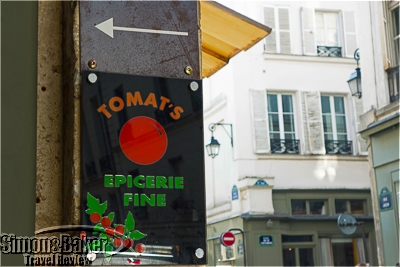
A discrete sign guided visitors to the internal courtyard where the shop was located.
Epiceries fines (gourmet shops) are hard to miss in Paris, France. They range from vast food halls that offer all manner of desirable foodstuff from around France and far beyond, to boutiques specializing in a specific indulgence: caviar, cheese, smoked salmon, chocolate or macarons to name a few. You name it and any self-respecting Parisian will give you at least a couple of bonnes adresses (top places where you are sure to satisfy your particular yearning). Many of these epicurean temples have been in business for well over a century and have achieved the status of local institutions on the checklist of foodie tourists from every corner of the planet.
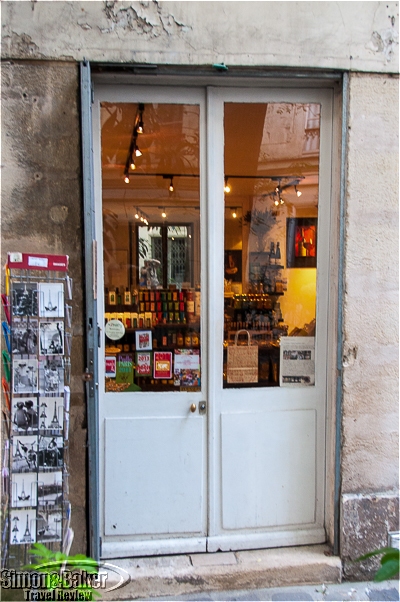
Unassuming doors led to a treasure trove of delicacies from the French heartland.
Then there are adresses confidentielles, exceptional places to be shared only as a favor to someone’s friends. Tomat’s (12 Rue Jacob, 75006 Paris, France. +33 1 44 07 36 58. www.tomats.fr), a tiny gem tucked in a 17th century courtyard in the heart of Saint Germain des Prés rates high on my list of the latter. Barely a decade old, its unique appeal is rooted in the passion of its owner-manager Alexandra Blanchet de Pudhot for the traditional delicacies of the French heartland. She was proud to point out that 95 percent of her inventory comes from small French producers. She also featured a few outstanding Italian treats, such as her coarse fresh Genovese Pesto so delicious that one of my friends has taken to slathering it on toasted country bread.
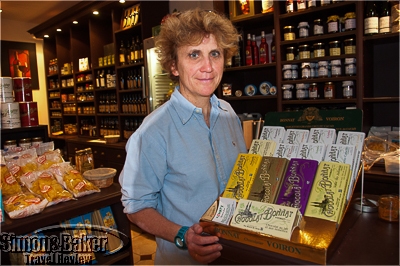
Tomat’s owner-manager Alexandra Blanchet de Pudhot
In addition to a broad array of the essentials that great pantries are made of, she also sourced exceptional seasonal specialties. At the time of my early fall visit she had just received a fish and crawfish terrine from the Loire Valley that was otherwise only available at the producer’s. And in anticipation of the holiday season her inventory was being enhanced with attractive assortments of exotic spices each with a cookbook included, as well as new kinds of truffled foie gras, duck confits and traditional goose sausages from the South West of France that I expect will star in my gourmet gift baskets. Alexandra had tasted approximately 80 percent of the products carried at Tomat’s. Her associate was charged with tasting the remainder, such as artisan jams and honeys, the full range of the peerless Bonnat chocolate bars, and other sweets. Products that have become permanent staples of the inventory were re-sampled periodically to ensure that the high quality remained constant.
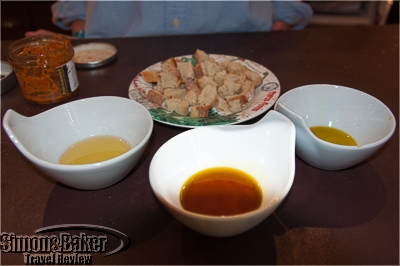
A tasting of artisanal Huiles LeBlanc
At Tomat’s the emphasis on personal contact was as exceptional as the products on the shelves. Alexandra clearly enjoyed discovering her customers’ tastes to better offer suggestions on what could delight them and enhance their recipes, making her épicerie the sort of place where savvy cooks get their “secret ingredients.” In my case recently, one such find was a small pot of Beaume de Casanova, an exquisite bitter chocolate and ginger mustard, a few dabs of which had my guest raving over a simple roasted chicken. I had not suspected such a thing existed until my visit to Tomat’s. Nor had I heard of Huiles LeBlanc, a wide range artisan oils from Burgundy.
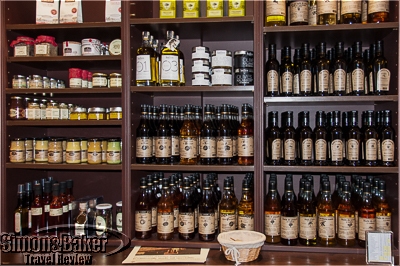
The shelves were brimming with the makings of a great pantry.
The family-owned and operated enterprise has extracted exceptional virgin oils from a variety of products from pistachio, pine and hazelnuts to marrow pits for well over a century. In Paris, they could be found at Tomat’s exclusively. I was a bit dubious at some of the most esoteric concoctions such as oil from the nut found inside the pit of prune plums, until I had a taste of several of them. In all cases, it had a more subtle, smoother taste than the nut itself. Their pistachio oil is my new favorite to drizzle over seared scallops and poached mild white fish. As for the prune plum nut oil? A few teaspoons transformed a humble autumn fruit compote into an intriguing dessert. I have also been known to use it as a dipping oil for bits of day-old brioche.
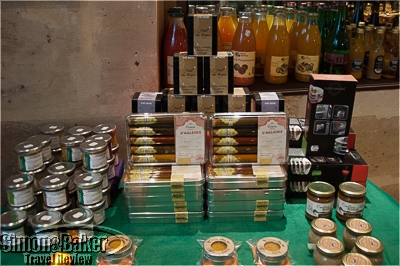
An attractive assortments exotic spices made original gifts
With its exceptional variety of unusual products, personalized service and this not insignificant detail, friendly prices, Tomat’s has become a frequent stop for me, just in case a new interesting something has come in. It usually has.

























































